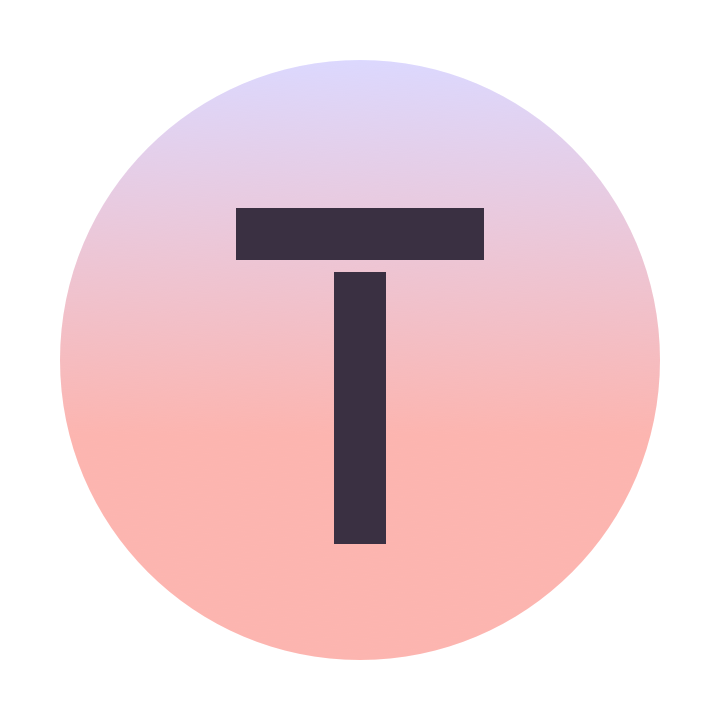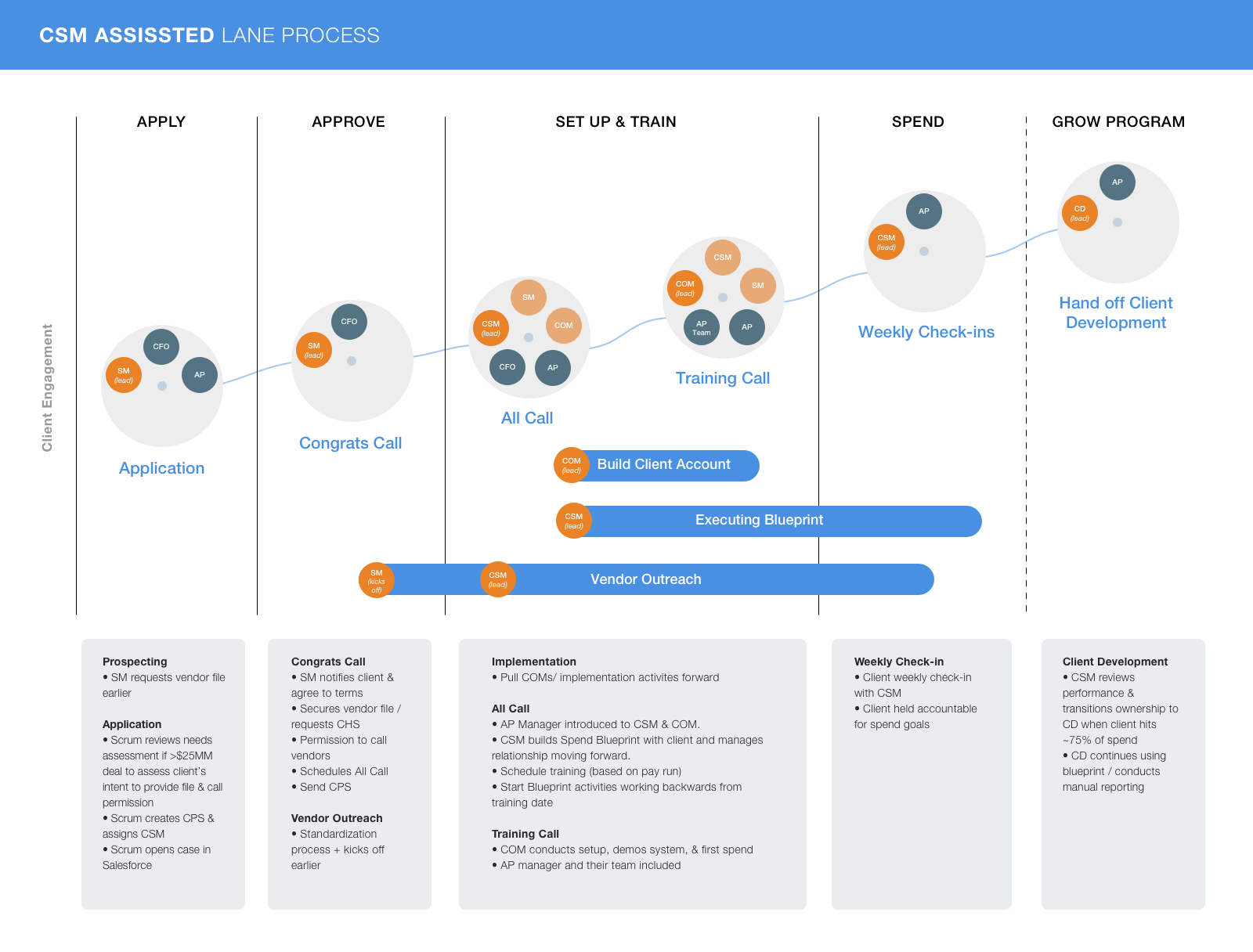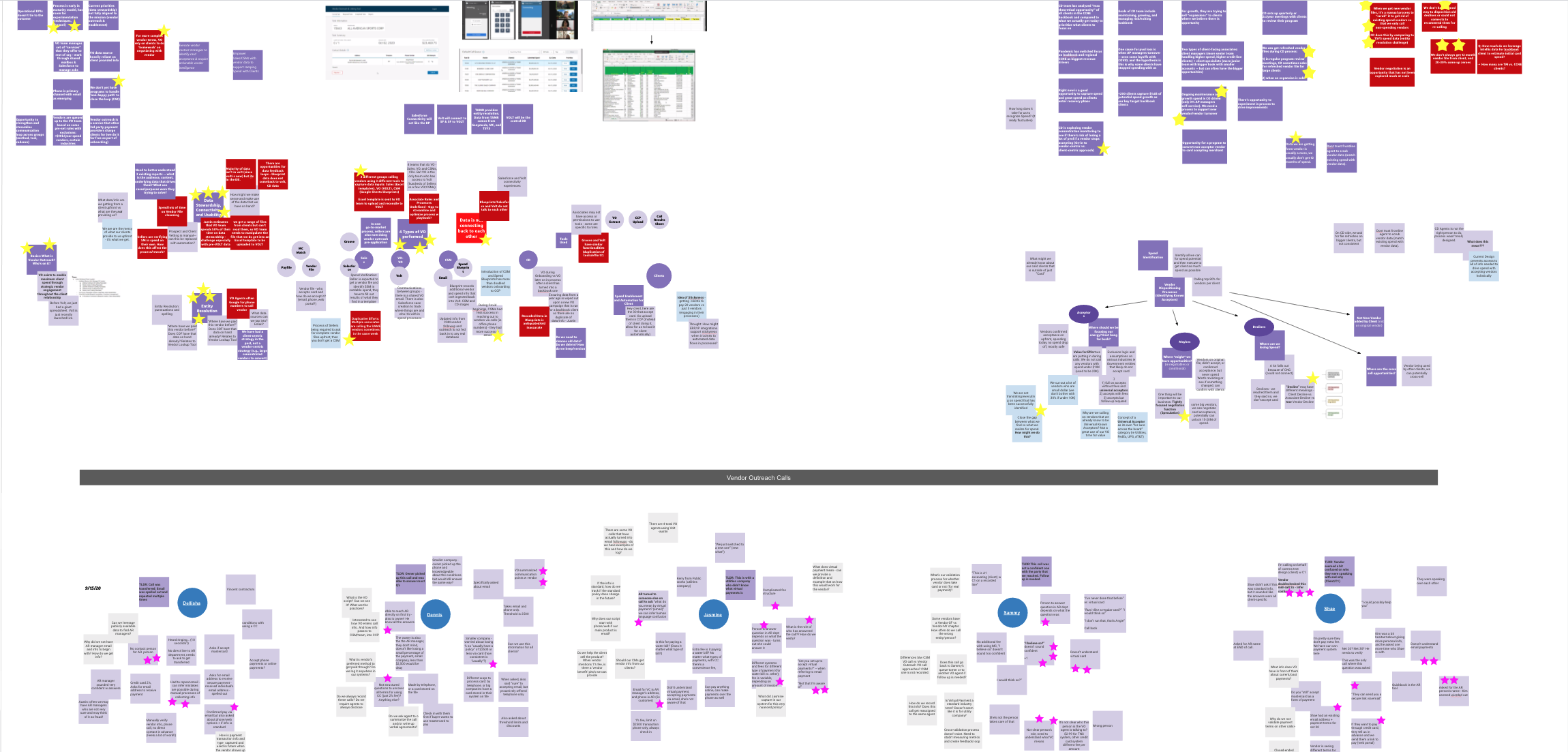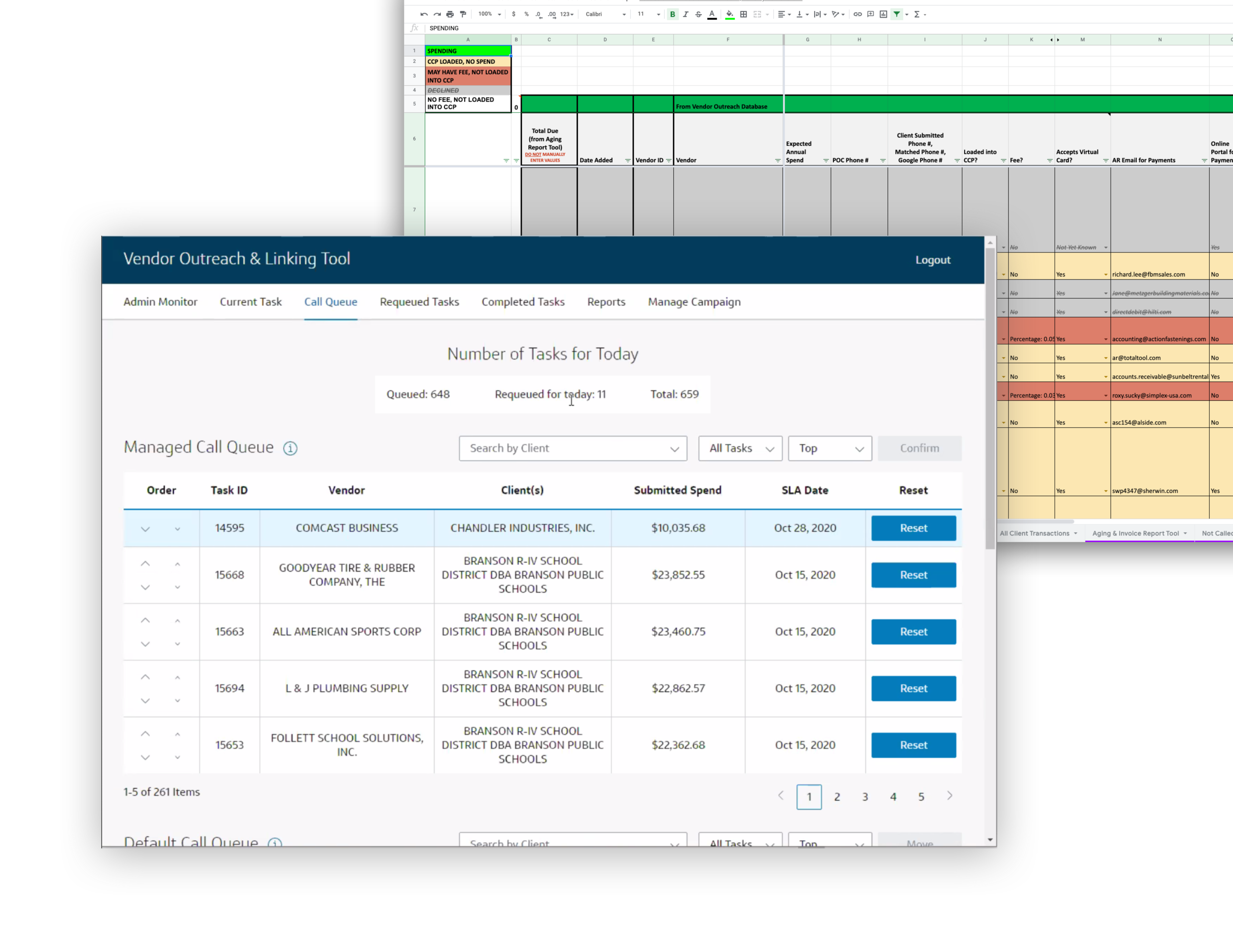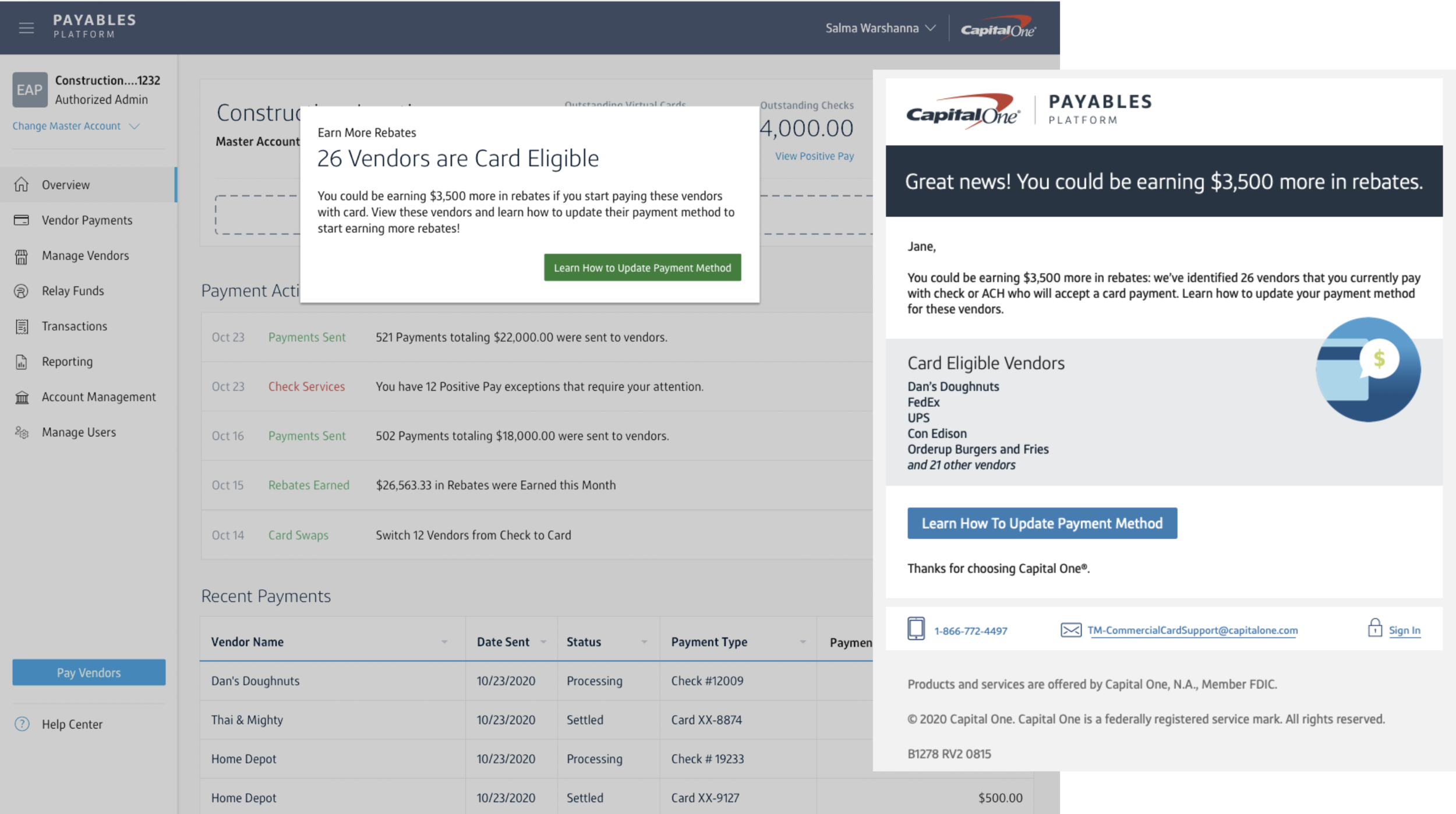Project Time: September 2020 to present
My Role: Service Designer & Strategist – I provide research strategies on understanding the current business processes and ecosystem; Work with stakeholders to create product visions and MVP plans; Create a current state journey map based on research data and engage stakeholders to find gaps and opportunities; Build a comprehensive framework for a future state system and journey map, facilitate co-creation workshops and brainstorm sessions, successfully gained vision alignments across teams. Created mockups and prototypes to help teams visualize the new experiences for our clients, vendors and associates.
The Spend Ecosystem & Data Infrastructure
Business Context
Spend enablement system is the monetization engine of Integrated Payables offered by Capital One. It is a set of systems, processes, and people, who operate in sync to drive clients’ payables to virtual card. Information about our clients’ vendors is the backbone of our operational and analytical decision-making in spend enablement. The success of our spend enablement system depends heavily on how many vendors we can reach, the breadth of information we know about clients’ vendors, how well we tailor card payment agreements to create a win-win-win value proposition for our clients, ourselves, and our clients’ vendors.
The current journey creates a spend funnel that pinches drastically at the bottom, resulting in capturing only ~2% of potential spend.
Business Need
We need to be deliberate with a destination-oriented architectural answer to where and how each component of the spend ecosystem should be built, such that all components (and the system as a whole) can:
Scale effectively as the Commercial Card and Integrated Payables businesses grow
Interface with one another & operate as a single system, rather than in silos
Meet user (associate, client, vendor) needs, in order to effectively drive payments to card
Adapt flexibly as business and user needs evolve
Research Into the Current Process
Research Planning
I spent time studying the previous research and the existing data around the ecosystem, so that I could gain the fundamental concept and identify the missing insights to be able to generate a solid conclusion of the problems. This also helps develop a research plan with a clear scope and budget of time for focusing on the really useful parts instead of reinventing the wheels.
Deep Dive and Empathize
The research goal is to identify the gaps in the current process design from a holistic perspective, and what are the factors drive the lagging of the spend enablement capabilities and the experience pain points of our associates, clients and vendors.
The spend ecosystem is very complex as involves many lanes of services from sales to vendor outreach to client success to servicing. I developed a research timeline and tracker for research participants to log notes and share learnings.
We interviewed our SMEs and associates to learn about their day in the life, and the tools that they use. We sat in 30+ live calls that our associates have with vendor and clients. We included various stakeholders (our product managers and business analysts) both during the ethnographic research and learnings sharing. This triangulation helps reduce the level of subjectivity and keep the team on a consistent knowledge level throughout the project.
Data Synthesis and Analysis
I facilitated a few co-creative workshops and synthesis sessions to codify the data we gathered from research. The team started identifying themes around data connections, process flows and opportunities. We also learned that some teams are working in silos solving part of the problems of the ecosystem, which is not a long-term solution for the root cause. We understand that vendor data is the heart of spend enablement system, and a data infrastructure that sustainably supports the system at scale is imperative.
Visualizing Research Insights
Personas
After interviewing our internal associates from different service lanes, I refined the personas by adding general role responsibilities, behavioral patterns, needs, impediments, and their key activities.
Current State System and Journey Maps
I created a system map that encompasses all the stages and business objectives in the whole spend enablement journey, front-stage events and touchpoints, emotion journey of our associates and clients, back-stage processes and tools, vendor data input and output flows.
The map has successfully brought the engagement of our stakeholders from Business, Product, Data, Experience Platform. It’s become a foundation for teams to learn, connect, and further research.
Zooming in the Problems
For the Ecosystem
Different associates like Vendor Outreach and CSMs are owning different stages of the workflow leverage different tools today, which disabled vendor matching and cardability capability.
Client-facing and vendor-facing tools are not providing intelligent and data-driven experinces.
For the Data
There is no single, centralized repository of vendors and their attributes
Current vendor data is decentralized across multiple systems; each built to support a specific use case
Each vendor data repository has select set of vendor attributes, that sometimes overlap with other repositories
Some vendor data doesn’t get systematically captured today
2. We lack of end-to-end visibility into vendors and their associated spend throughout the spend journey
There is no internal master vendor identifier to trace vendors end-to-end
We rely on manual process to join free-form text fields to scrappily connect the dots today
3. We don’t have vendor level-intelligence
We record vendor as they relate to the client (client-vendor intelligence)
There are multiple, exact duplicate records of the same vendor in our vendor repositories
The Future Vision
I started working with teams to identify a variety of opportunities to increase our spend volume through both identifying more known acceptors and getting more of them spending. For us to succeed, we need a centralized vendor data repository that enables the end-to-end client and vendor traceability and intelligence, a set of robust systems, models, and teams to support spend vendor lifecycle.
I built a comprehensive framework for the future state system and journey map which encompasses front-stage and back-stage events, touchpoints, tools, data systems, data enablement, emotional journey and success metrics. This helps our stakeholders visualize how components are interconnected in the ecosystem. I facilitated co-creation workshops to engage our stakeholders and SMEs, which provide opportunities for us to collaboratively brainstorm, envision the new experiences and lifecycle for our clients, vendors and associates. This successfully helped us gain stakeholders’ shared excitements, participation in the definition, and cohesively work towards the aligned goals.
I also created vision mockups to help teams envision Spend north star experiences, and better visualize what data enables us to achieve. This also helps us to easier get buy-ins from stakeholders.
I am currently working with teams to refine the future visions through a series of workshops, brainstorming sessions. It’s critical to create a more tactical and strategic overview that can be matched with the overall operations, data systems, related service lanes and the way the Bank runs business. Our goal is to launch the MVP and pilot by the end of 2021.
Thank you for reading.
